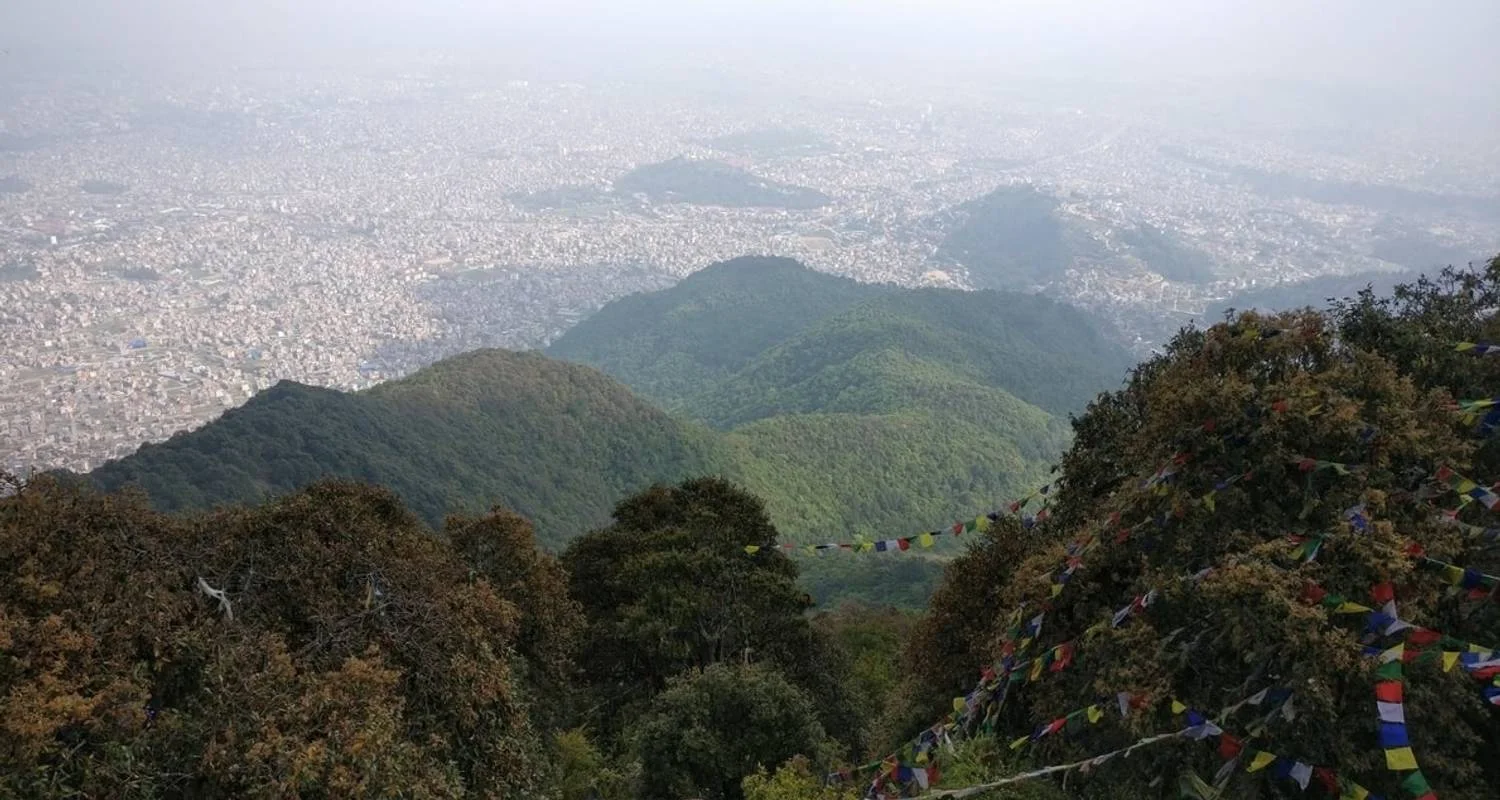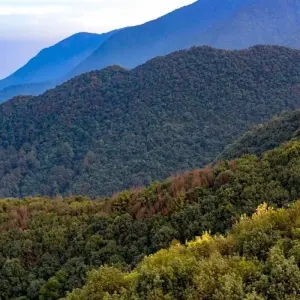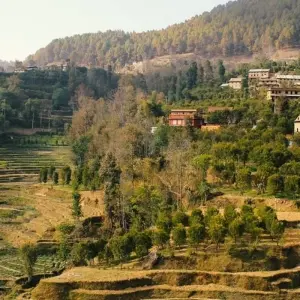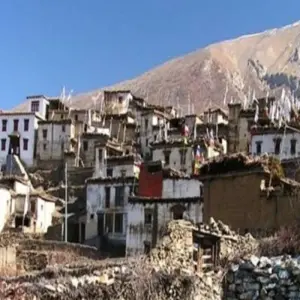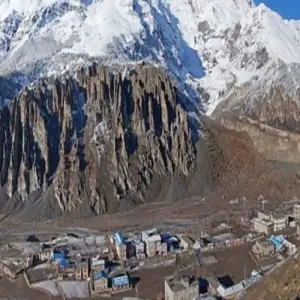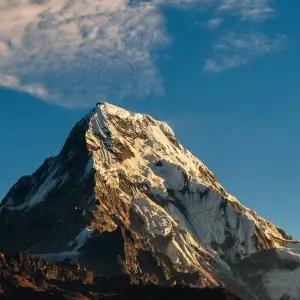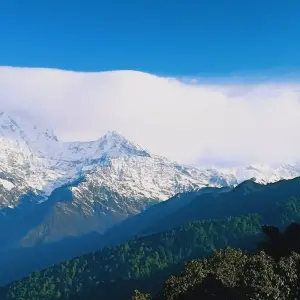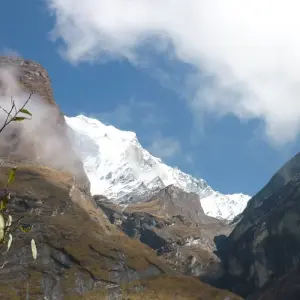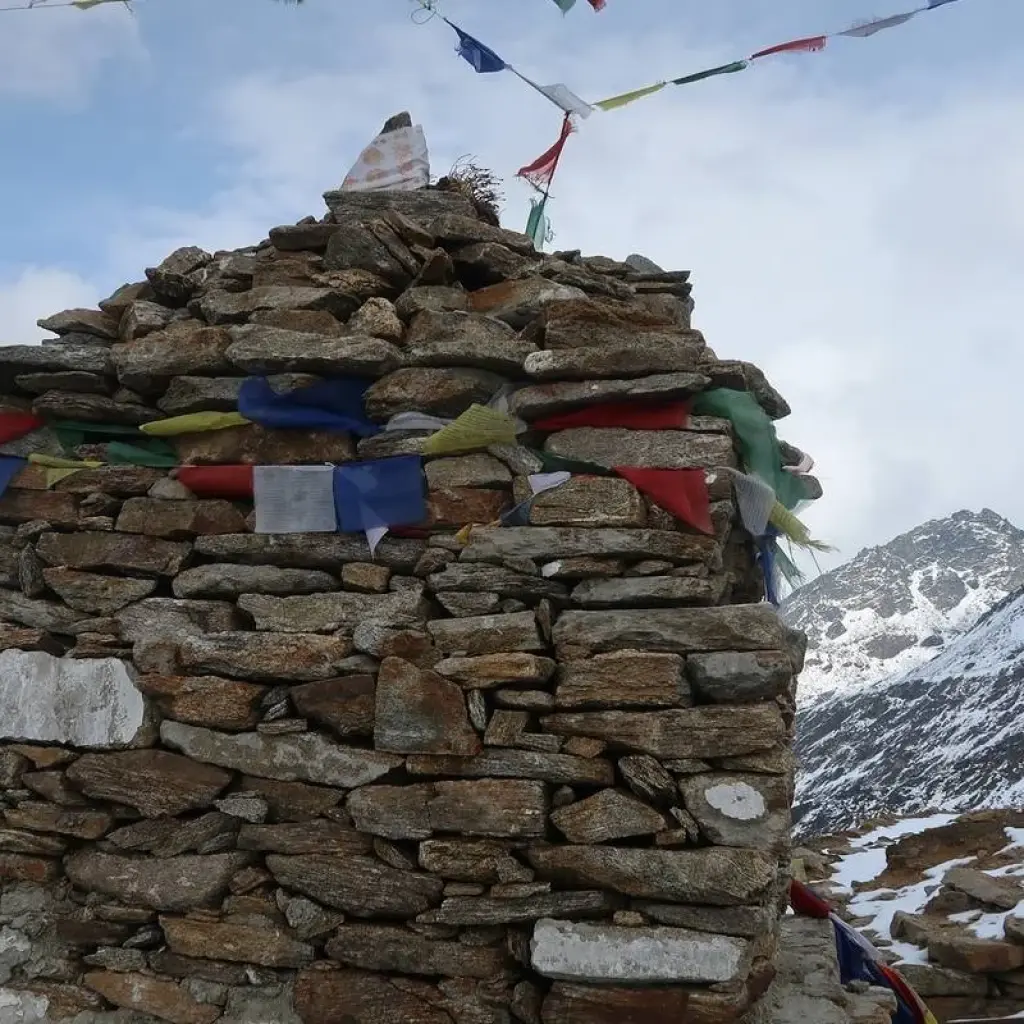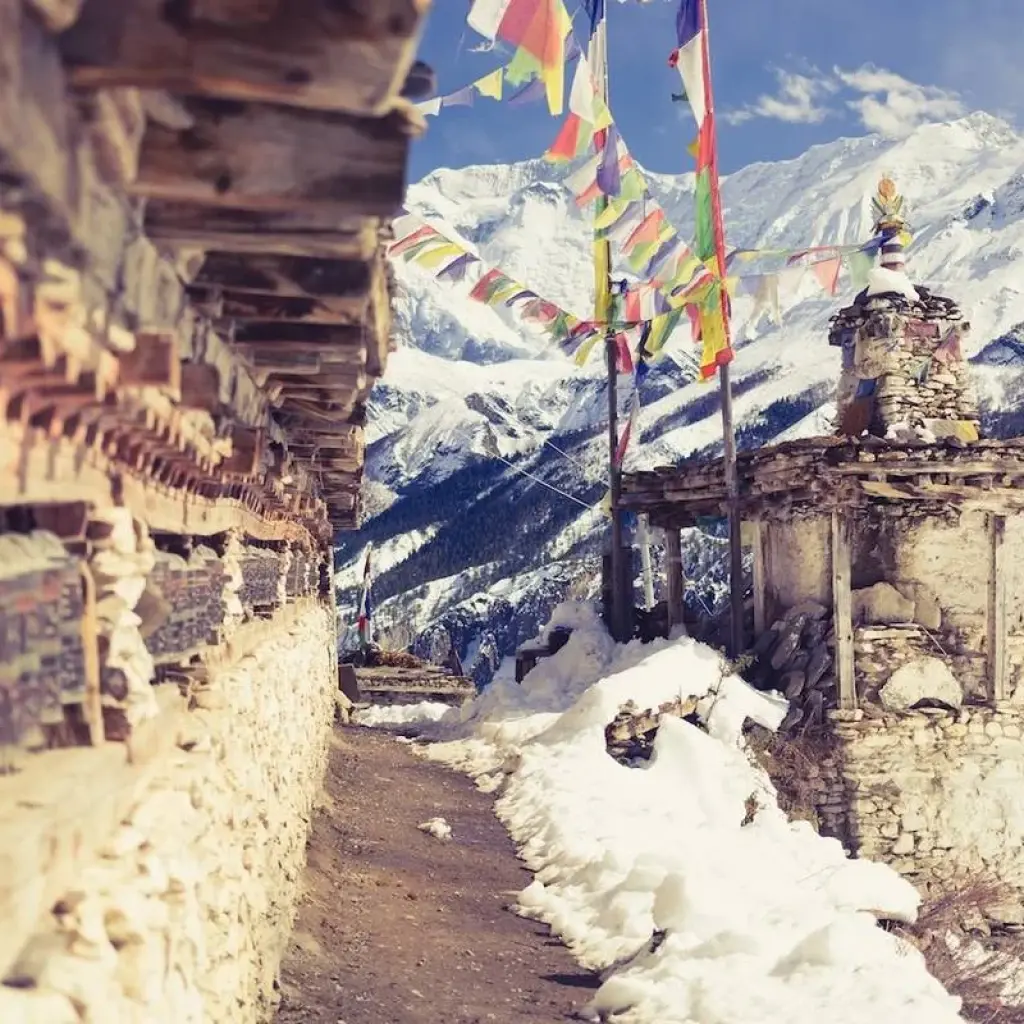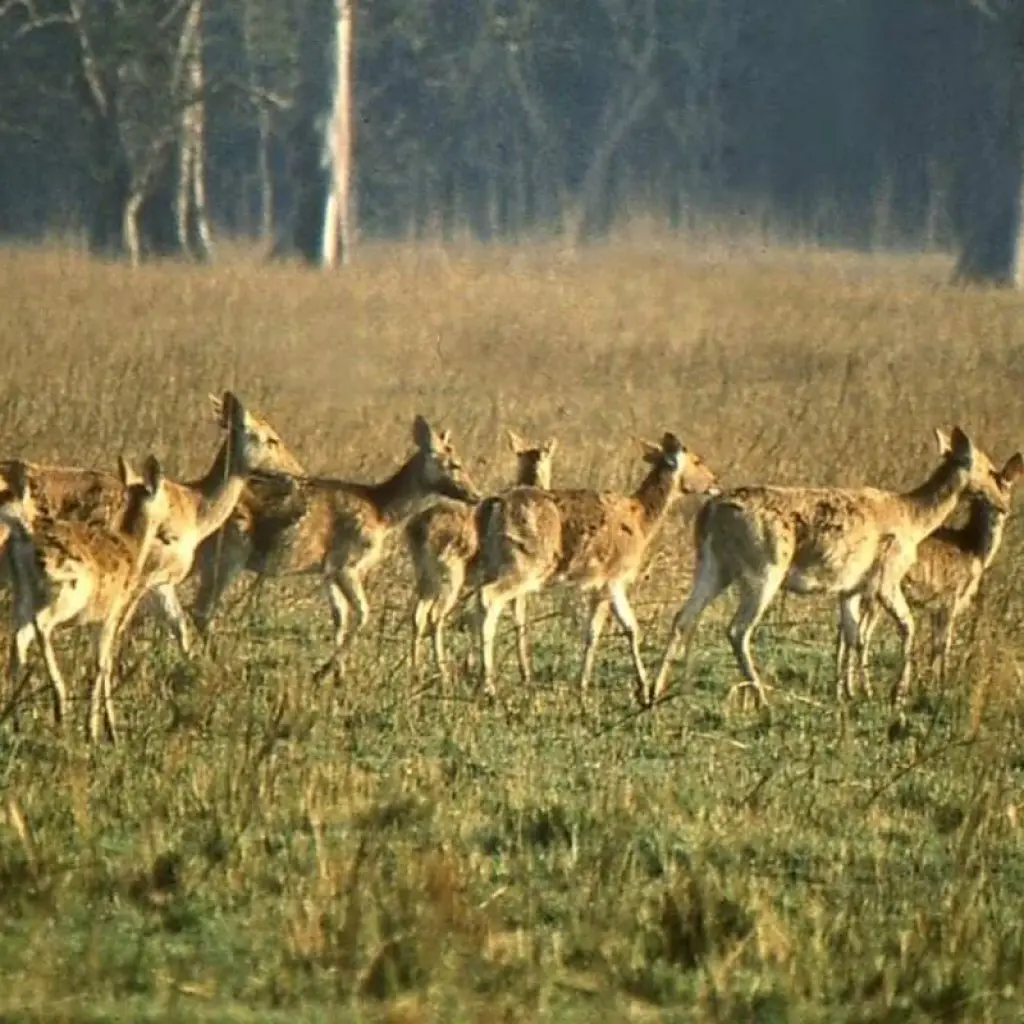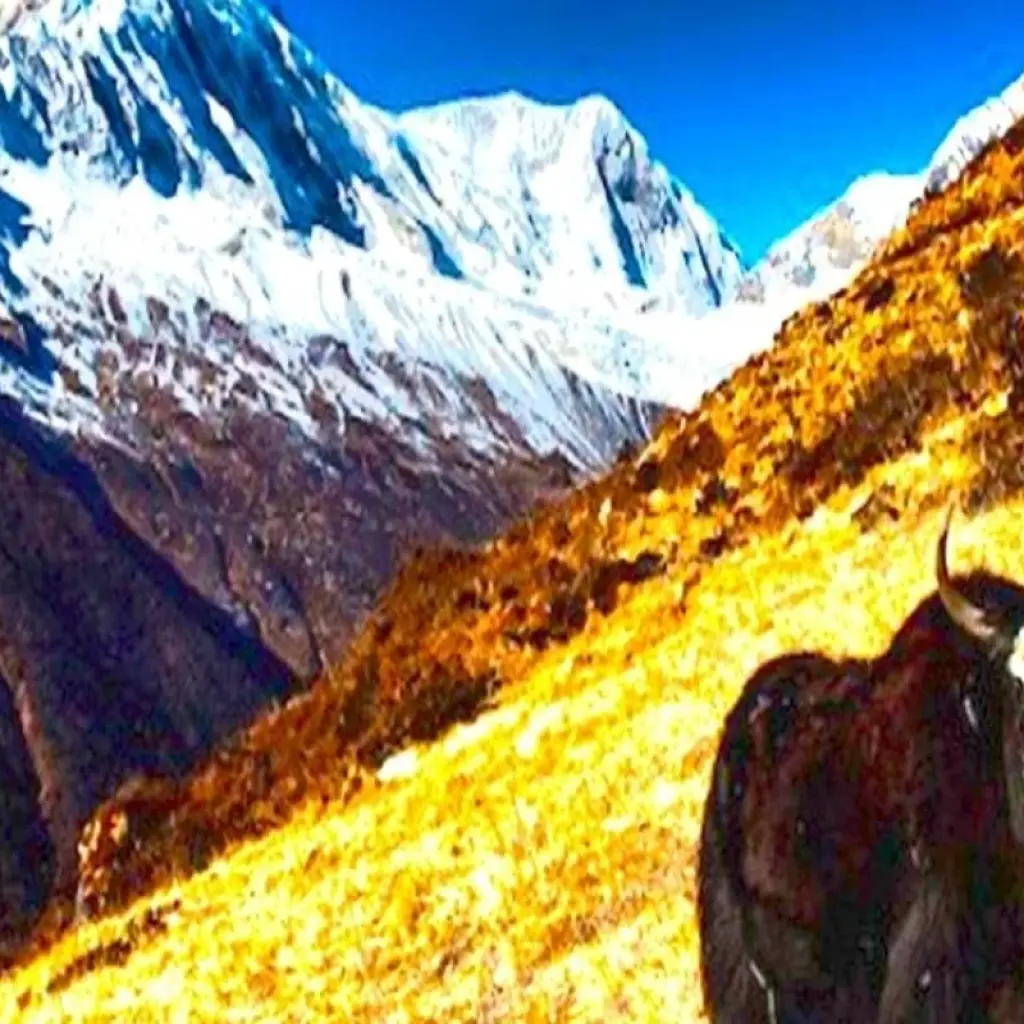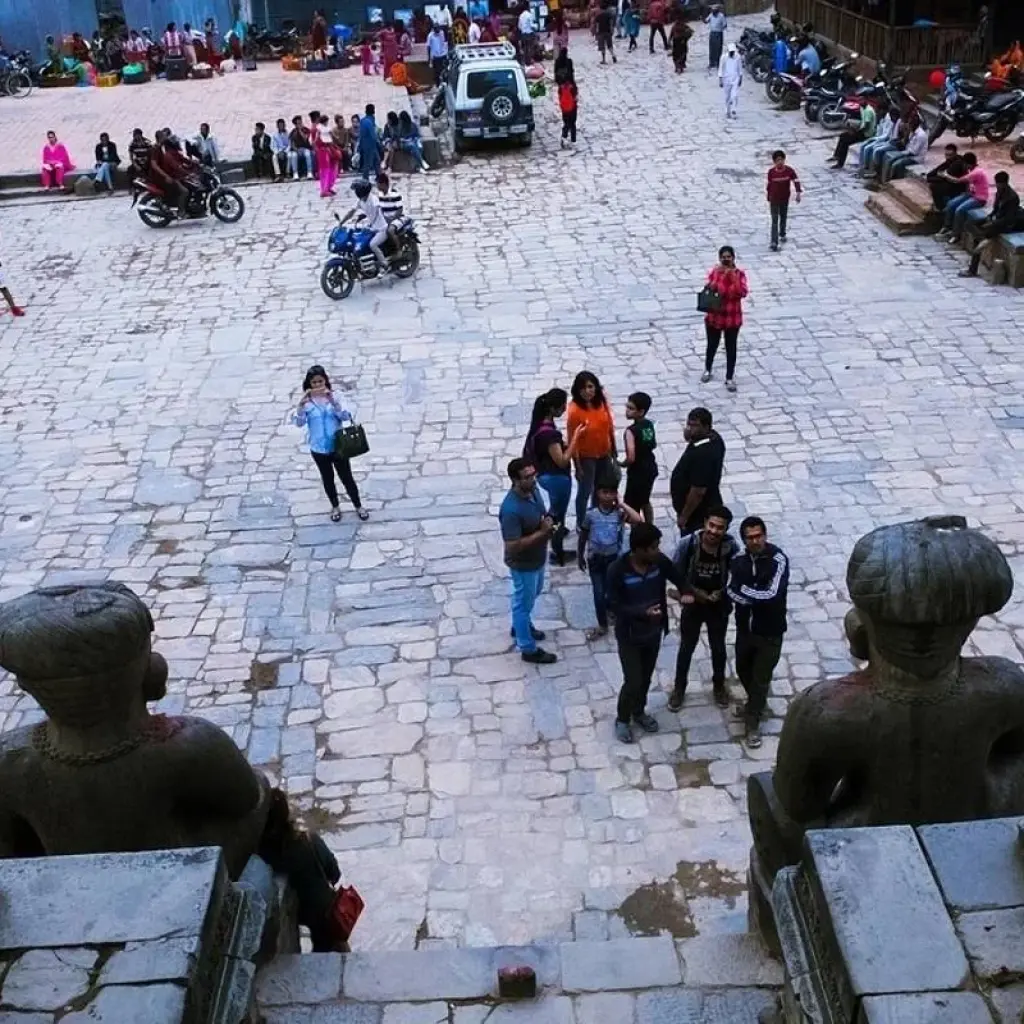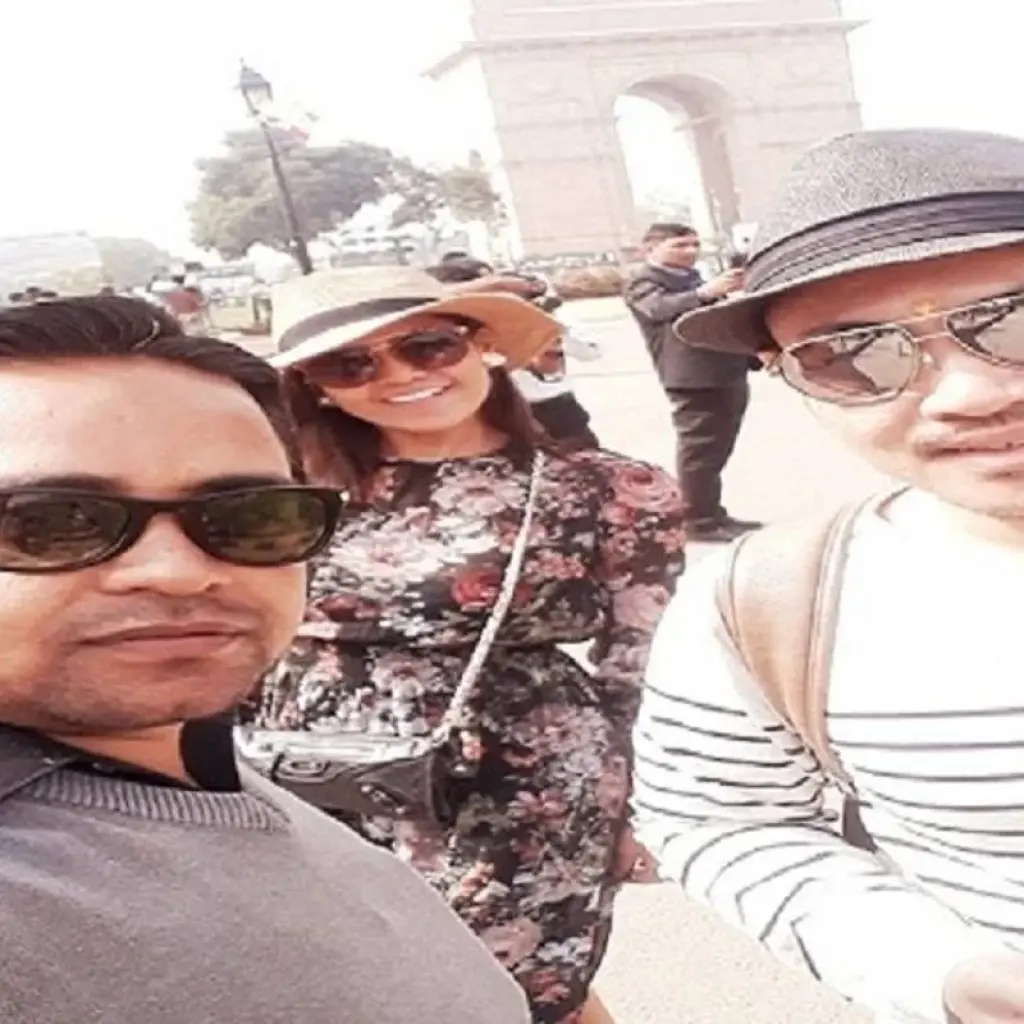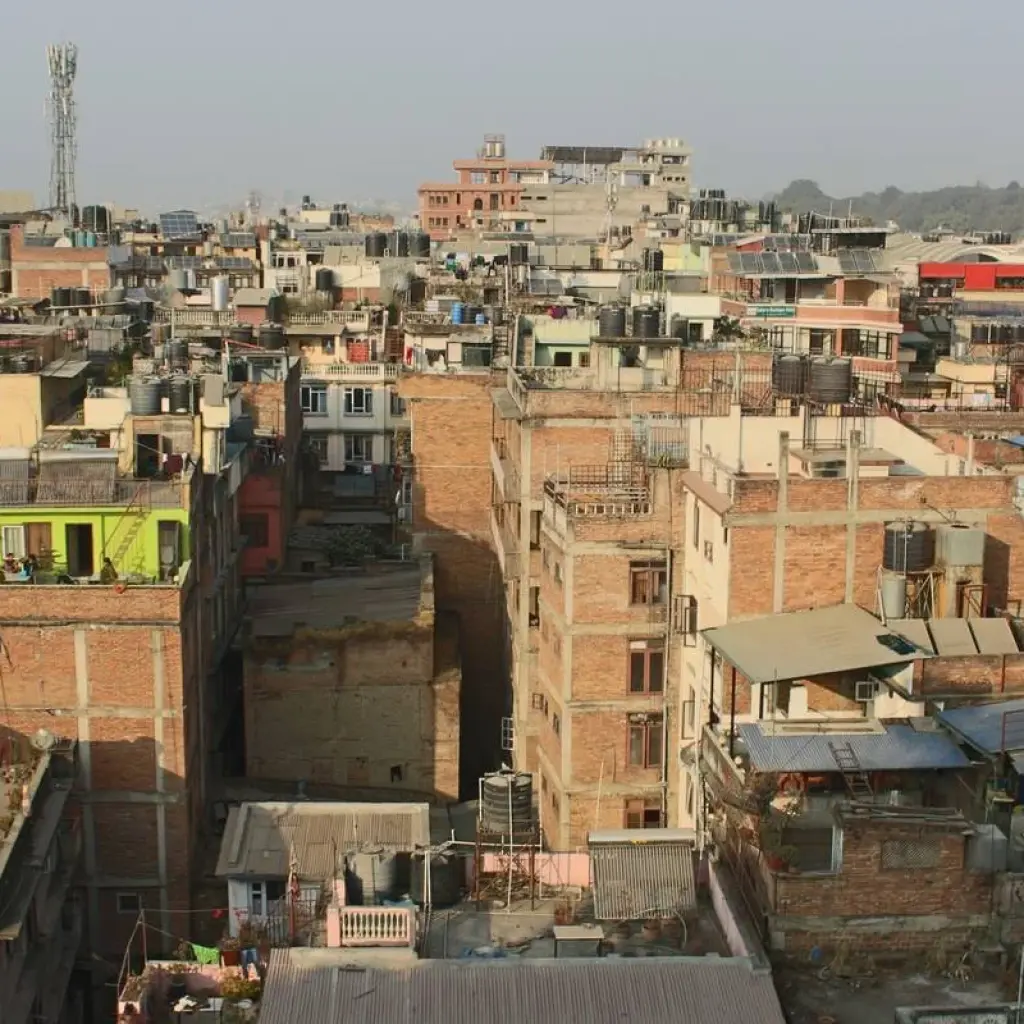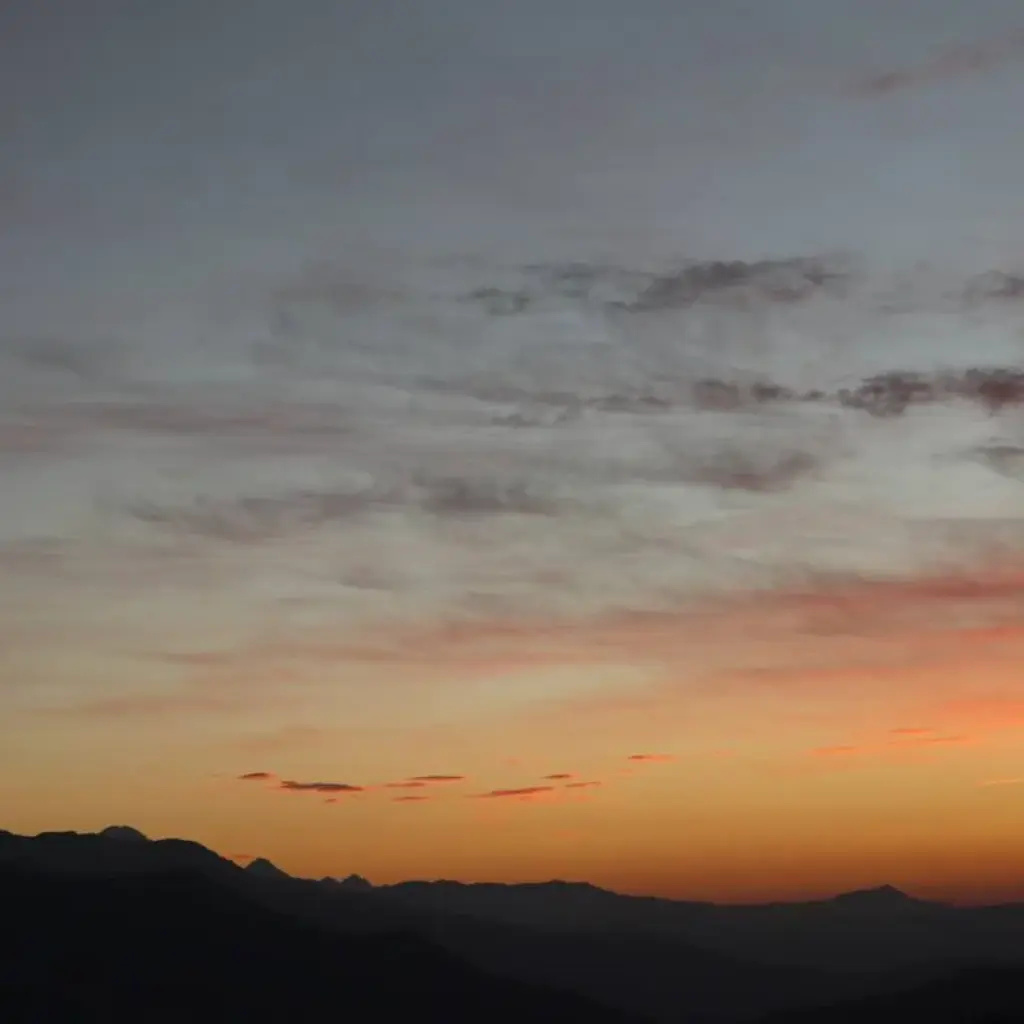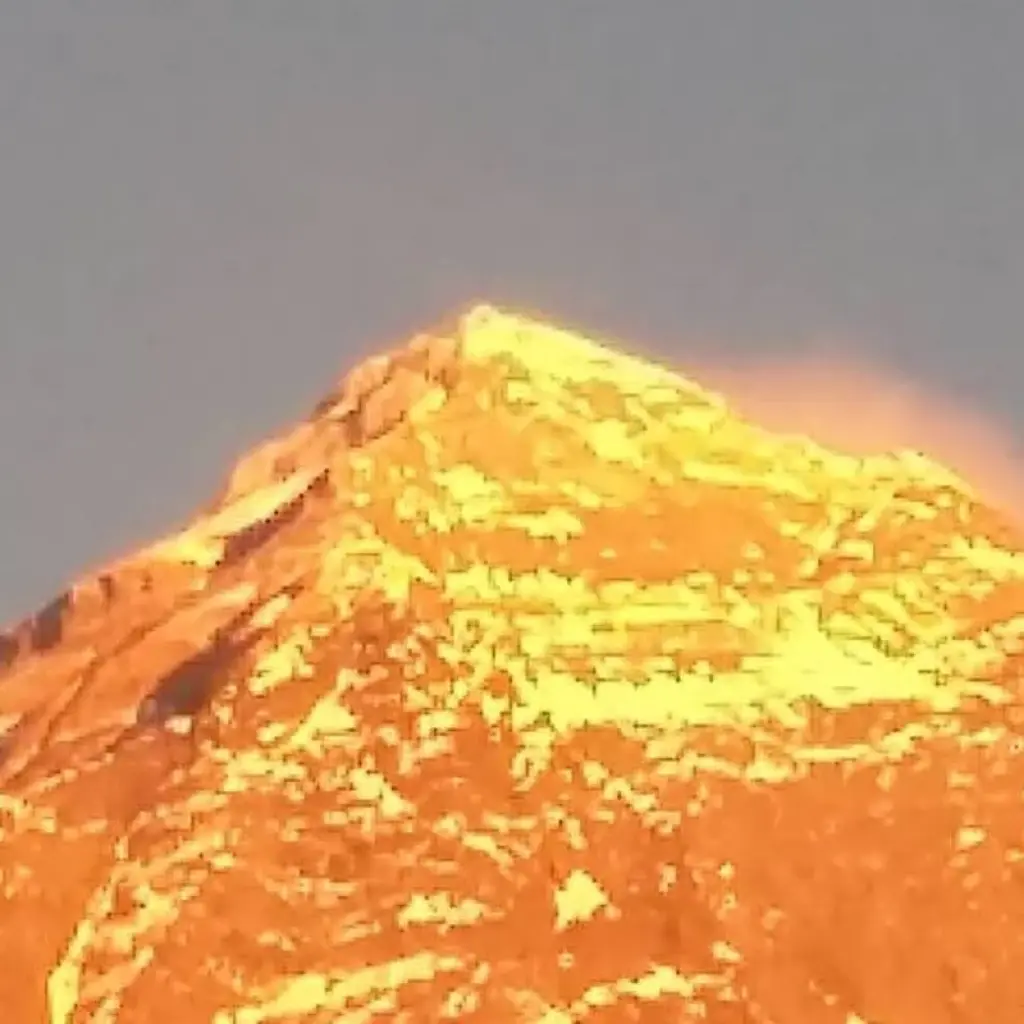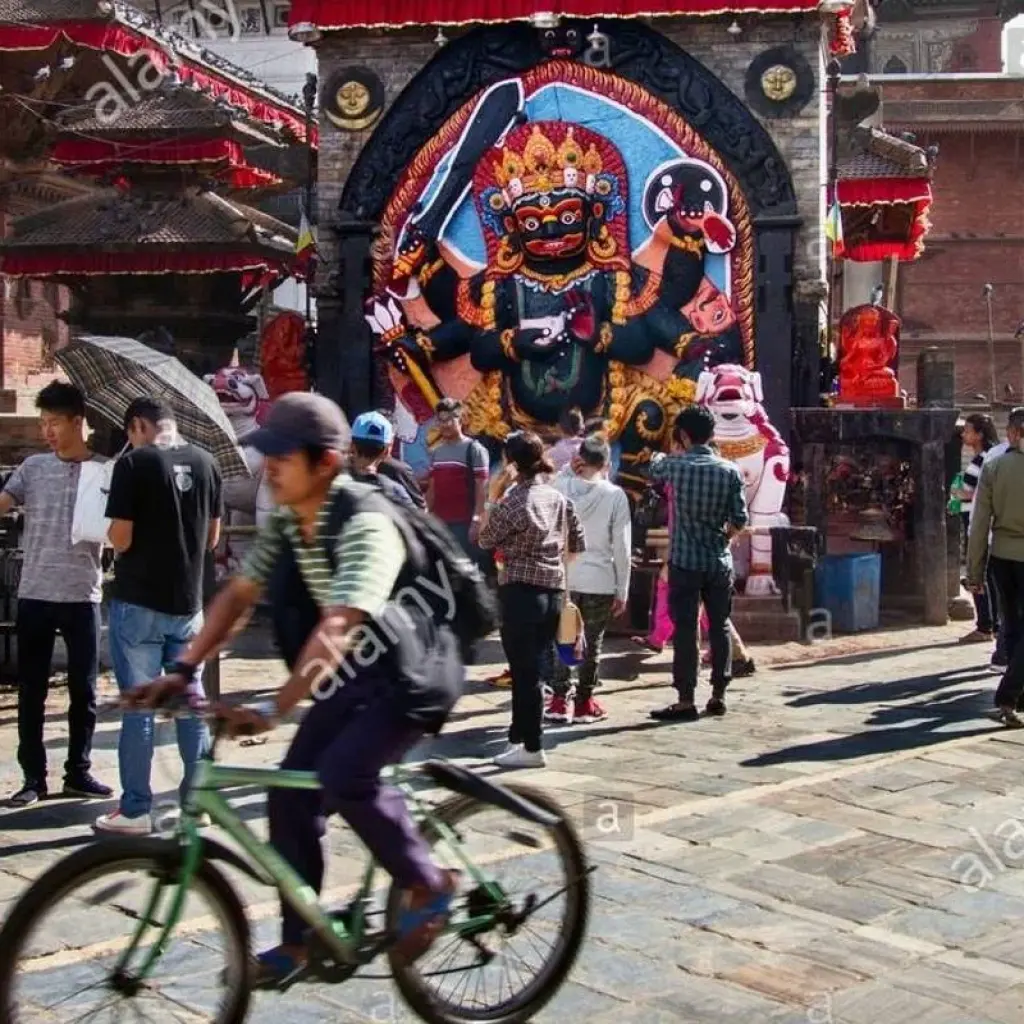The Annapurna Circuit Trek is a rare place that combines natural beauty with culture. This unusual combination of long, snow-capped peaks and clear lakes is unprecedented. It's a stunning location with chaotic rivers, deep canyons, hot springs, and picturesque villages.
The people there are friendly and simple, with a diverse cultural background. The Annapurna Circuit Trek combines breathtaking mountain scenery with a diverse cultural experience.
Experience the majestic nature of the Annapurna Circuit trek by leaving behind the hustle and bustle of city life and immersing yourself in the towering beauty of the mountains. The trail leads north from the Himalayan main range, eventually entering the dry, Tibetan-like trans-Himalayan region. This trek provides an enjoyable and manageable journey.
The trek, which crosses two river valleys and surrounds the Annapurna Massif, ends at Thorung La Pass (5,416 m/17,769 ft), where you will stand on the edge of the Tibetan plateau. The route is usually taken in an anticlockwise direction, which allows for a more gradual ascent and a safer and easier crossing of the high Thorong La pass. Along the way, observe panoramic views of the Annapurna Massif, which includes Annapurna I-IV, Dhaulagiri, and Machhapuchhre. The Annapurna range's landscape is punctuated by numerous other peaks ranging in elevation from 6,000 to 8,000 meters, providing an awe-inspiring backdrop for your trekking adventure.
The Annapurna Circuit Trek Highlights:
● One of the most famous circuit treks in the world.
● Visit the Annapurna region.
● At 5,416m, traverse the Thorong La Pass.
● Explore the culture and warmth of the locals.
● Amazing views of Annapurna Massif, Thorung Peak, Nilgiri, and Dhaulagiri, Machhapuchre.
● Magnificent lakes, glaciers, and deep gorges are just a few of the many stunning waterfalls found in this region.
● Visit Muktinath, a sacred place for Buddhists and Hindus alike.
● You can take a dip in the natural hot springs of Tatopani.
● Poon Hill Viewpoint (3,210 m) offers a stunning view of the Himalayas.
● Walk through lush rhododendron and birch forests.
How to Trek Annapurna Circuit Trek?
The Annapurna Circuit Trek begins in Pokhara, with the first leg going from Bhulbhule to Bhulbhule. Following the Marsyandghi River Valley, we pass through picturesque villages such as Jagat, Dharapani, Chame, and Pisang, with much of the trail paralleling the Beisahar-Manang Road. While the existence of roads has made mountain biking more popular, particularly among adventurers visiting Mustang, it has not decreased the appeal of trekking. After acclimatizing in Manang, we continue to Yak Kharka before ascending to Thorong Phedi, our base camp for the ascent to Thorong La Pass, which stands 5,416 meters (17,769 feet) above sea level. During our journey, we'll make a spiritual stop at the Muktinath Temple, esteemed by both Hindus and Buddhists for its 108 stone taps and eternal flame.
Continue to Tatopani via lush rhododendron and birch forests. Poon Hill is approximately an hour's trek from Ghorepani. Poon Hill (3,210 meters) is a popular viewpoint with breathtaking views of Dhaulagiri, Annapurna I, II, South, Macchapuchre, and other peaks. After viewing the spectacular sunrise from Poon Hill, we trek to Berithanti before driving to Pokhara.
The Best Time for the Annapurna Circuit Trek:
It is possible to trek the majority of the circuit year-round, even during monsoon season.
October–November (Autumn)
This is the peak season for hiking in Nepal, and for good reason! The trails are alive with vibrant colors, fresh from the recent monsoons, providing a clean and refreshing trekking experience. Clear skies at night provide stunning views of the bright heavens. However, don't be fooled by the warm daytime temperatures; nights can be chilly, with temperatures dropping below freezing. It is the busiest time on the circuit, so book your accommodations early, as tea houses tend to fill up quickly.
December–March (Winter)
Temperatures can drop dramatically during this season, especially as we ascend in elevation. While the days may feel chilly, the nights can be cold, especially at higher elevations. What about the silver lining? The trails are quieter and less crowded, providing a more serene and intimate trekking experience.
April–May (Spring)
The warm weather and clear skies make April and May one of the best months to trek the Annapurna Circuit. With the majority of the snow melted, you'll have ideal hiking conditions. Keep an eye out for unique cloud formations at lower elevations, which will add to the charm of your trekking adventure!
June–September (Summer)
Celebrate the magic of the monsoon season! Trekking now provides a unique experience as the lush landscapes burst with vibrant flora in full bloom. In addition, if you're planning a Tilicho Lakeside trek, this season's trails will be smoother.
Trekking Permits for the Annapurna Circuit Trek
TIMS
Every trekker preparing for an adventure in Nepal must obtain a TIMS (Trekkers Information Management System) permit. This mandatory permit, issued by the Nepal Tourism Board (NTB) and the Trekking Agencies Association of Nepal (TAAN), ensures the safety and security of trekkers exploring Nepal's stunning trails.
ACAP
In 1992, the Nepalese government designated the Annapurna region as a conservation reserve, establishing it as the nation's largest protected area. To access the Annapurna Conservation Area, hikers must obtain an ACAP (Annapurna Conservation Area Permit), also known as an entry permit.

